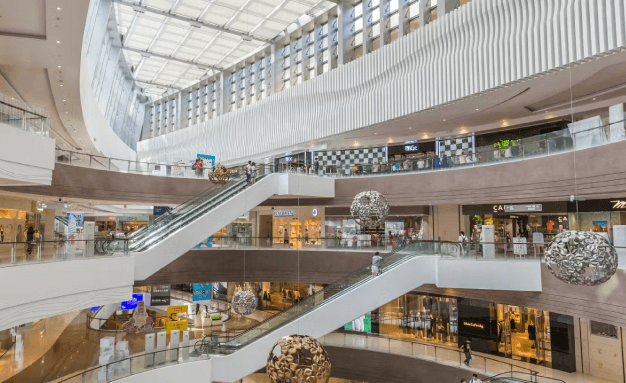BIOMETRIC PAYMENT, A FUTURE ALREADY PRESENT: CHALLENGES, OPPORTUNITIES AND RISKS
WHAT IS A BIOMETRIC PAYMENT?
New technologies have been a precursor to notable changes in several areas, including payments. Proof through biometric payment; a technology that allows purchases to be made based on a person’s physical and biological characteristics. Said like this, the concept of payment by biometrics may seem complex. However, by reading this article, you will be able to lift the veil on this innovation and identify the advantages for your business.
BIOMETRIC PAYMENT: HOW DOES THIS SYSTEM WORK?
A payment method that has become popular in China, biometric payment is an innovation inspired by biometrics. It allows, thanks to the unique characteristics of a person, to identify them and approve a payment debited from their bank account.
In practice, it works in 3 steps:
- The collection and capture of a person's biometric data;
- Digitizing data and comparing it with reference points;
- Authorization or refusal of payment within the limit of a very small margin of error.
Biometric payment helps secure your payments. As merchants, optimize the in-store customer experience by easily collecting payments for the sale of products and services. For consumers, this convenient solution eliminates the need to enter a PIN or password before finalizing their transactions online or at the in-store checkout.
A NEW CONTACTLESS PAYMENT TECHNOLOGY
Fingerprints are the most popular form of data for making a biometric payment. They work with any terminal equipped with a sensor dedicated to fingerprint reading. However, in addition to the fingerprint, there are other data powered by artificial intelligence, which are used to make biometric payments.
Among them, facial recognition, voice recognition, iris analysis, venous network. If DNA is also data used to carry out transactions by biometrics, its use is technically more complex. Uncontaminated DNA samples are required, in addition to the use of specific devices to identify the DNA of any client.
THE CNIL'S VIGILANCE TOWARDS BIOMETRIC PAYMENT AND ITS RISKS
The advantages of biometric payment seem obvious. However, its use in France is regulated. Indeed, it is subject to authorization from the CNIL (Commission Nationale Informatique et Libertés). With regard to these solutions, the regulatory authority makes data security and respect for consumer privacy absolute priorities.
To do this, the CNIL adopts two distinct approaches:
- The first allows consumers to maintain control of their biometric “template”, thanks to local storage on the device during biometric payment. Out of use for the device manufacturer or mobile operator, the template cannot be extracted from the device, much less cross-referenced with other data.
- Unlike the first, the second method does not offer this control over the template. It is rather characterized by the recording of data in a Cloud. This information may be used for other purposes.
To strengthen these measures, the CNIL has established its regulatory framework for biometric authentication systems. Each company adopting biometric payment technologies must therefore guarantee the protection of personal data, in accordance with the GDPR.
WHERE ARE WE?
Many consumers have already made a semblance of biometric payment via smartphone payment. But one of the next steps that's already being rolled out is using your fingerprint to pay by card. In other words, when you use your bank card, the code that you normally have to enter will be replaced by you.
Payment terminals can be equipped with a fingerprint reader, but after the health crisis and barrier gestures, some customers will surely be reluctant to touch a device handled by others to make a biometric payment.
Don't worry, the alternative solution already exists. Instead of having a fingerprint reader on the payment terminal, the reader would be directly integrated into the card. Like BNP Paribas, banks are currently working on marketing cards using this technology, and they should arrive on the market very quickly.
Another technology being deployed is facial recognition. In Moscow, supermarkets have already started to be equipped. Here, it is not even necessary to show your bank card to make a biometric payment, you just need to face a camera to be identified. Currently still in the testing phase, this system should be extended to 3,000 stores. In China, this technology is already widely used.
BIOMETRIC PAYMENT, THE NEW ELDORADO?
With such technology, consumers will be able to make payments faster but also more securely. Indeed, a face or fingerprint is much more difficult to steal than a 4-digit code.
Security is one of the major arguments for biometric payment. But zero risk does not exist and it is important to offer a high level of security. And this should not only concern the transactions carried out but also the data recorded.
Indeed, as said previously, to access biometric payments, you must register your fingerprints, your face, or others. So banks or companies that collect this data will have to prove that it is properly protected.
For consumers and merchants alike, the security and protection of biometric data is a major concern. This is why in France, merchants who wish to offer biometric payment must obtain authorization from the CNIL. The desire to strengthen transaction security must be accompanied by a significant level of data security. This represents a double challenge for businesses.
Today, Market Pay already ensures that it complies with payment security standards, in particular with the PCI DSS standard, Payment Card Industry Data Security Standard. In the future, we will offer increasingly varied and innovative solutions to offer merchants better services for the in-store and e-commerce experience thanks to biometric payment.
Habits will change and evolve, and new needs will emerge. This is an area full of challenges and opportunities on which Market Pay will not hesitate to work in order to support the deployment of new solutions by being as close as possible to merchants. Moreover, biometric payment could meet the need for innovation in payments at the service station level.





